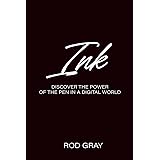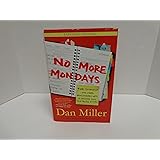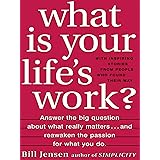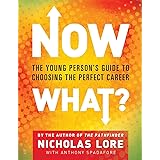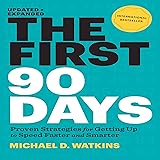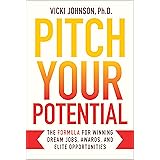Navigating the modern job market can often feel like a complex puzzle, particularly when it comes to crafting a resume that truly stands out. Many job seekers experience the frustration of applying for numerous positions without receiving a single callback, wondering if their qualifications are truly the issue. The reality, however, often lies in the presentation of those qualifications. An outdated or poorly structured resume can quickly get overlooked by recruiters and Applicant Tracking Systems (ATS), no matter how impressive your experience.
Fortunately, there is a clear solution to this common dilemma. The video above succinctly highlights a resume format that recruiters consistently favor, streamlining the initial review process and significantly increasing your chances of getting noticed. This article will delve deeper into each critical component, expanding on the video’s essential points to help you develop a robust, 2025-ready resume that accelerates your job search.
The Foundation of a Modern Resume Format: Why Structure Matters
Before dissecting each section, it is crucial to understand why a specific resume format is so vital in today’s competitive landscape. Recruiters, on average, spend mere seconds scanning a resume before deciding whether to move forward. Imagine if your document were a dense, unorganized block of text; it would be incredibly difficult for them to quickly identify key information. Consequently, a well-structured resume acts as a clear roadmap, guiding the recruiter’s eye to your most relevant qualifications and achievements.
Furthermore, most large companies utilize Applicant Tracking Systems (ATS) to filter applications. These software programs scan resumes for keywords and specific formatting elements. A resume that isn’t optimized for ATS can be rejected automatically, even before a human ever sees it. Therefore, embracing a recognized and recruiter-approved resume format is not just about aesthetics; it is a strategic imperative for navigating both human and algorithmic gatekeepers.
Essential Sections for Your 2025-Ready Resume
As the video illustrates, certain sections are non-negotiable for a highly effective resume. Each plays a distinct role in building a comprehensive profile that showcases your professional value. Let’s explore these in detail, providing context and best practices for each component.
Contact Information: Making It Easy to Connect
Your contact information is the gateway for recruiters to reach you. This section, typically placed prominently at the top, must be accurate, concise, and professional. It should include your full name, phone number, professional email address, and, as the video emphasizes, your LinkedIn profile URL.
Ensure your LinkedIn profile is polished and consistent with your resume content, as recruiters will undoubtedly check it. Consider creating a custom, clean URL for your LinkedIn profile for a more professional look. Conversely, avoid including your full home address or social media links unrelated to your professional brand, as these can be unnecessary and sometimes even detrimental.
The Compelling Resume Summary or Objective
Following your contact details, a powerful resume summary (for experienced professionals) or an objective (for entry-level candidates or those making a significant career change) serves as your elevator pitch. This concise paragraph, typically 3-5 sentences, should immediately convey your most relevant skills, experience, and career aspirations.
Imagine if a recruiter could only read this one section; what would you want them to know? Focus on highlighting your key value proposition, what you bring to the table, and how you align with the job description. Incorporating relevant keywords from the job posting here can significantly boost your ATS compatibility, ensuring your resume passes the initial digital screening.
Professional Experience: Showcasing Your Impact
This section is arguably the most critical part of your resume, detailing your work history in reverse chronological order. For each role, include your job title, company name, location, and employment dates. However, simply listing responsibilities is not enough to capture a recruiter’s attention.
Instead, focus on quantifiable achievements and the impact you made in each position. Consider using the STAR method (Situation, Task, Action, Result) to frame your bullet points. For example, rather than stating “Managed social media accounts,” articulate “Grew social media engagement by 25% within six months through a targeted content strategy, resulting in a 15% increase in lead generation.” This approach provides concrete evidence of your capabilities and demonstrates your value to potential employers.
Education and Certifications: Building Credibility
Your educational background provides essential credibility, especially for roles that require specific degrees or certifications. List your degrees, major, university name, and graduation date. If you have multiple degrees, typically list your highest degree first.
Similarly, professional certifications, as mentioned in the video, can significantly enhance your resume’s appeal. Include the name of the certification, the issuing body, and the date obtained. These demonstrate a commitment to continuous learning and specialized expertise that could set you apart from other candidates, particularly in technical or highly regulated fields.
Extracurricular Activities: Beyond the Core
While often overlooked, a well-chosen extracurricular section can provide valuable insights into your soft skills and leadership potential. For recent graduates or those with limited professional experience, this section can be particularly impactful. Think about activities where you demonstrated leadership, teamwork, problem-solving, or communication skills.
For instance, leading a student organization, volunteering for a cause, or participating in a competitive club can showcase dedication and transferrable skills. Imagine if an employer needs a candidate with strong organizational skills; your role in coordinating a major university event directly demonstrates that capability. Be selective, however, ensuring that any included activities are relevant to the skills required for your target roles and align with a professional image.
Advanced Tips for Optimizing Your Resume Format
Beyond the core sections, several advanced strategies can further refine your resume format for maximum impact. One key aspect is tailoring your resume for each specific job application. While the core structure remains, modifying keywords, bullet points, and the summary to align precisely with the job description significantly improves ATS compatibility and recruiter appeal. Consider creating a master resume with all your experience, then selectively pulling relevant information for each application.
Furthermore, maintaining a clean, professional aesthetic is paramount. Choose a legible font (e.g., Calibri, Arial, Helvetica) between 10-12 points for body text and 14-18 points for headings. Utilize consistent formatting, ample white space, and clear section breaks to enhance readability. The goal of this resume format is to make it as easy as possible for recruiters to quickly understand your value and move you forward in the hiring process.




